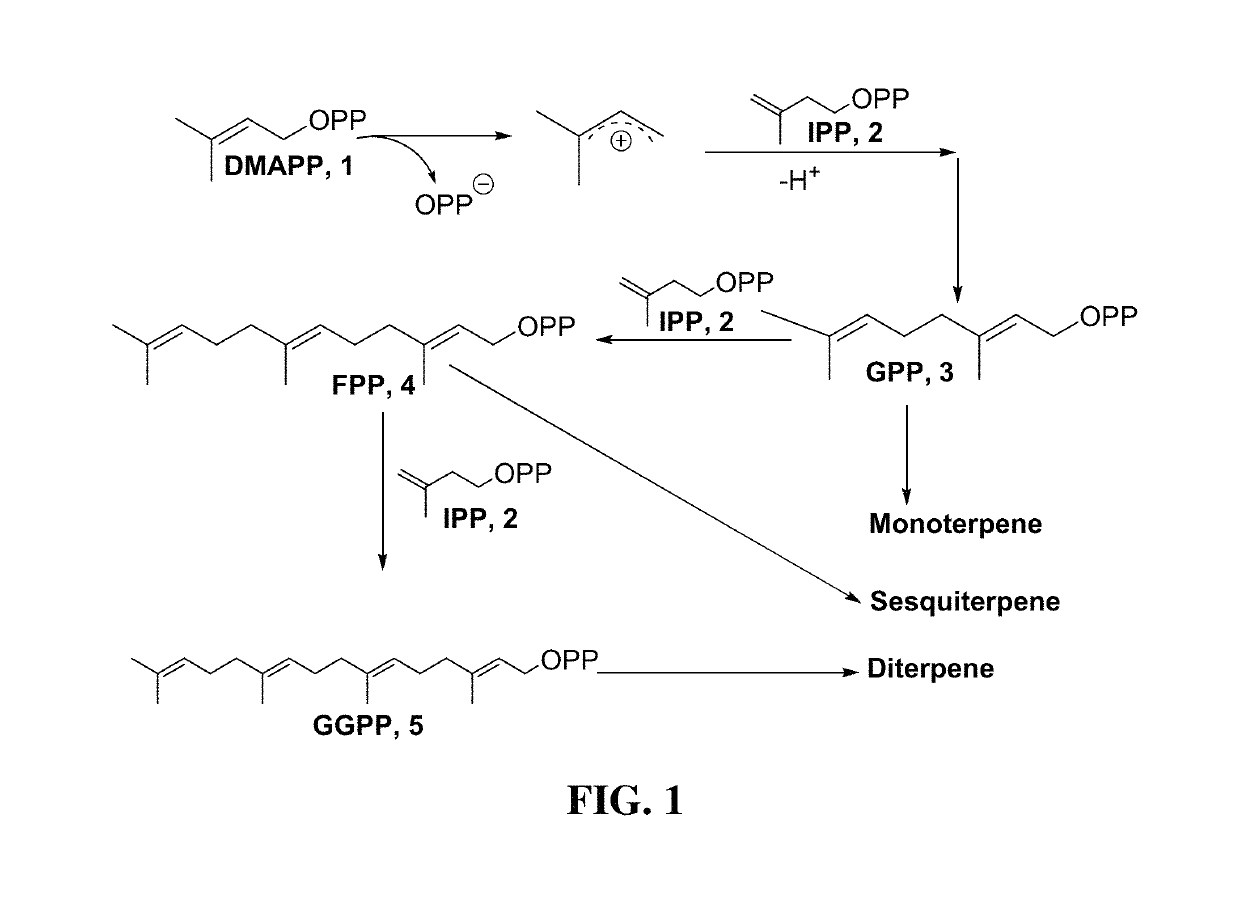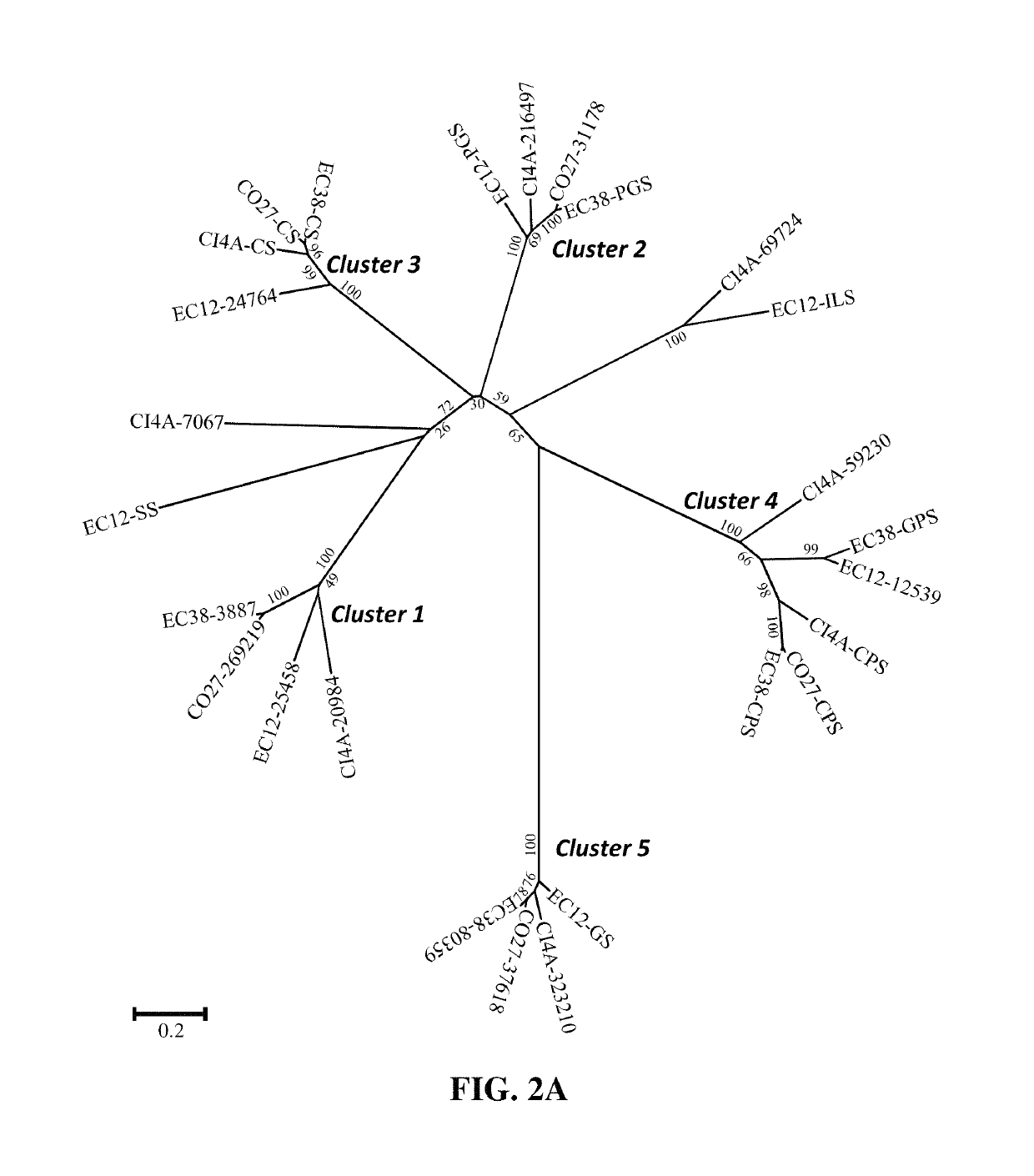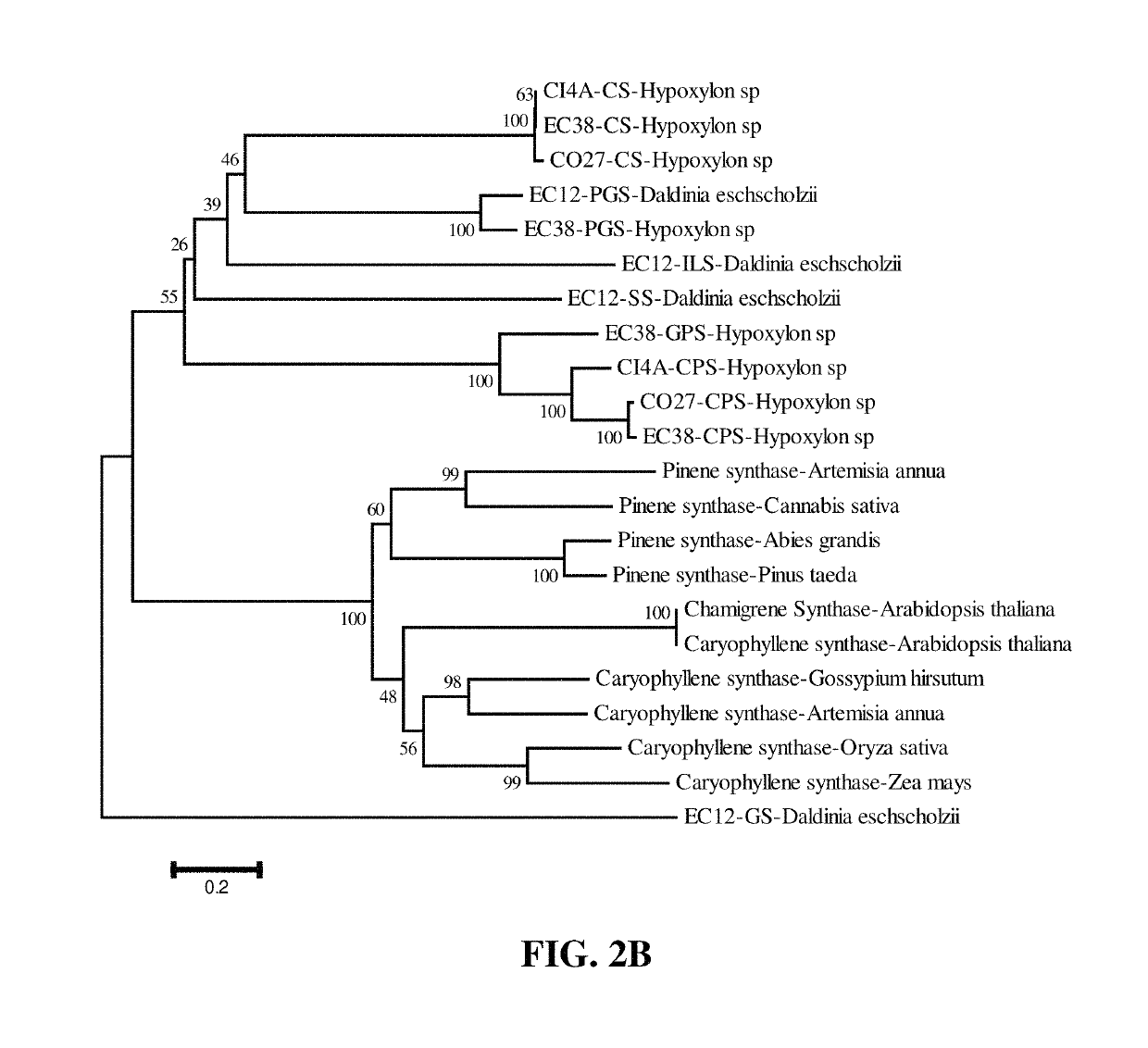Terpene synthases for biofuel production and methods thereof
a technology of terpenes and biofuels, applied in the field of terpene synthases, can solve the problems of inconsistencies in yield and purity, high cost of extracting terpenes from plants,
- Summary
- Abstract
- Description
- Claims
- Application Information
AI Technical Summary
Benefits of technology
Problems solved by technology
Method used
Image
Examples
example 1
covery and Functional Characterization of Terpene Synthases from Four Endophytic Xylariaceae
[0103]Endophytic fungi are ubiquitous plant endosymbionts that establish complex yet poorly understood relationships with their host organisms. Many endophytic fungi are known to produce a wide spectrum of volatile organic compounds (VOCs) with potential energy applications, which have been described as “mycodiesel.” Many of these mycodiesel hydrocarbons are terpenes, a chemically diverse class of compounds produced by many plants, fungi, and bacteria. Due to their high energy densities, terpenes (e.g., pinene and bisabolene) are actively being investigated as potential “drop-in” biofuels for replacing diesel and aviation fuel. Here, we rapidly discovered and characterized 26 terpene synthases (TPSs) derived from four endophytic fungi in order to produce mycodiesel hydrocarbons. Several of the identified TPS genes were expressed in an E. coli strain harboring a heterologous mevalonate pathway...
example 3
ioconversion of Algae Biomass into Terpenes for Advanced Biofuels and Bioproducts
[0260]Under robust algae growth conditions, algal carbohydrates and proteins typically comprise up to ˜80% of the ash-free dry weight of microalgae biomass. Therefore, production of algal biofuel through comprehensive use of all algal components and the addition of high energy density fuel compounds with “fit for purpose” properties or high-value bioproducts can both diminish the process cost and improve the overall process feasibility. In this Example, we firstly demonstrated the concept of a “one-pot” bioconversion of algal carbohydrate and protein into value-added terpene compounds (e.g., as advanced biofuel and high value bioproducts), thereby improving the feasibility of developing an engineered microbial consortium. The consortium for caryophyllene production yielded the highest titer of total terpene, up to 507.4 mg / L, including 471 mg / L of sesquiterpene, 36.4 mg / L of monoterpene, and 124.4 mg / L ...
PUM
| Property | Measurement | Unit |
|---|---|---|
| thickness | aaaaa | aaaaa |
| thickness | aaaaa | aaaaa |
| temperature | aaaaa | aaaaa |
Abstract
Description
Claims
Application Information
 Login to View More
Login to View More - R&D
- Intellectual Property
- Life Sciences
- Materials
- Tech Scout
- Unparalleled Data Quality
- Higher Quality Content
- 60% Fewer Hallucinations
Browse by: Latest US Patents, China's latest patents, Technical Efficacy Thesaurus, Application Domain, Technology Topic, Popular Technical Reports.
© 2025 PatSnap. All rights reserved.Legal|Privacy policy|Modern Slavery Act Transparency Statement|Sitemap|About US| Contact US: help@patsnap.com



